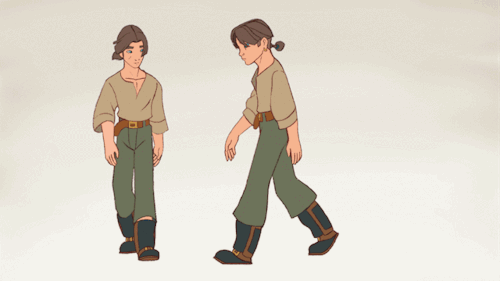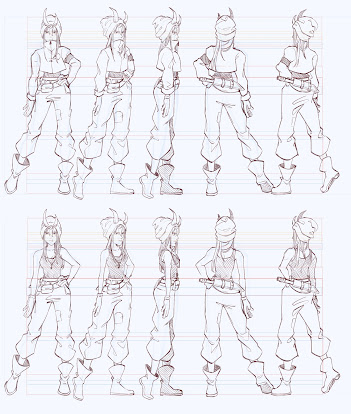What makes a good animated character?
A good animated character has flowed movements, personalities that the audience can see and understand. The audience should be able to read the situation by seeing the character's attitude and actions if they are well presented.
A good animated character starts off with planning. Every animated shows you've seen all started off with creators gathering ideas and shooting references.
Here is an example:

Everything you've seen from top companies like Disney, they all used references.
Example:Disney's live action reference of Alice in Wonderland (side by side)

Add on: What also helps when shooting your reference video is understanding and truly know your character. How does your character act? Does your character move around a certain way?

Dug from UP is totally different from Belle. From their personalities to movements.

The more you know and understand how your character acts and moves, the better you animate the character! A Turnaround and a character sheet should be needed to truly help understanding your character.
This is my original character design I created for another class.
I had to do a full turnaround & character expressions
After gathering all your references...what's next?
Posing/Blocking
This part is breaking down your reference. Breaking down the movement, having the key poses. By highlighting the key poses, this will help the flow of the animation movement later on.
Afterwards, you add in-between poses to connect the key poses.
Example: Blocking
Adding in more poses to connect the key poses
Splining
Splining is another process that helps in animation. It helps to convert the interpolation of the keys from stepped to spline. This is to connect the movement between each poses.

A graceful flow from point A to point B
Timing of movements & Spacing
Timing animation is the time how long an action takes. Weight, scaling properties, and emotion is also important along with timing. Physics plays along with timing.
Spacing animation is the spaces between frames. The functions of spacing is the same with timing if you want to create a believable movement.
Example:
The timing of the chair rocking back and forth. To make it believable, Mike's body movement flows along with the chair. We also have to remember his body weight is implemented with the chair.

Another Example:
Though I did mention physics plays along with timing animation...you can overexaggerate movements as well that can't be done the same in real life. Such as this scene where Flint is typing/coding extremely fast. His fingers looks like they're flying everywhere & is arm wobbles like noodles

When you put it all together...
This is from Tiktok & YouTube
[JGCruz3D]
Reference/Blocking/Refining




Watching this one...I was really intrigued with his work. The timing, the personalities/expression, and even the exaggerations. Putting everything all together, Jeff was able to bring the characters to life with unique personalities. We could tell if the character was happy, sad, tired, ect.
Lastly...Let's talk about what not to do...
Example 1:
The timing and movement are very off
They are trying to overexaggerate the feeling of scared/shock by the jump & eyes popping out..
but it just looks off because of the timing and movement.
This doesn't make the character feel like it's alive...

Comparison to Tom terrified movement.
Tom's movement is also exaggerated but it definitely screams to the audience that he is terrified.
The rapid movement and his pose, it fits very well to let the viewers know the situation.

Example 2:
Guts from the animated Berserk series
Berserk is one of my favorite MANGA series of all times so seeing the animated version...I was pretty disappointed.
What makes this scene so weird looking is Guts walking pace. For a big dude, it looks like he is taking baby steps.
The timing is off and the movement isn't natural.
ALSO: the way a character walks can describe their personality as well. Knowing Guts as a character...this walking scene of his DOES NOT fit his personality or him overall as a character.


Comparison to good animated character walks



Conclusion
Having lots of references, understanding your character's personality and overalls, implying blocking, spline, ect. will help you create a good animated character.
The more reference the better!
Now...to end this presentation!



